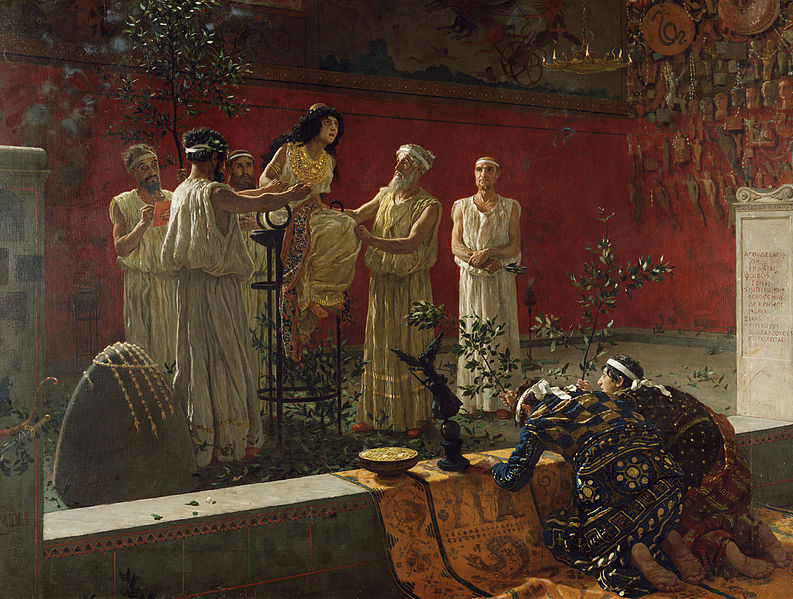
Figure 1. Consultation of the Oracle. From The Oracle, by Biacca Camillo Miola, 1880. Digital image courtesy of the Getty’s Open Content Program
A Quick Introduction
Delphi was perhaps the most important religious sanctuary of the ancient Greek world. This institution was so integral to life in the Mediterranean that it continued to function through the reign of Alexander the Great and into the Roman Empire. The prophecies given here play a large role, both in literature such as Sophocles’ Oedipus Rex and Aeschylus’ Orestea trilogy, and in daily life, especially during the Persian wars.
This sanctuary is important to the study of women in antiquity as the famed oracle who resided in Delphi was a woman. Who was the Pythia, and why it is important that she continues to be a topic explored by classicists.
About the Sanctuary
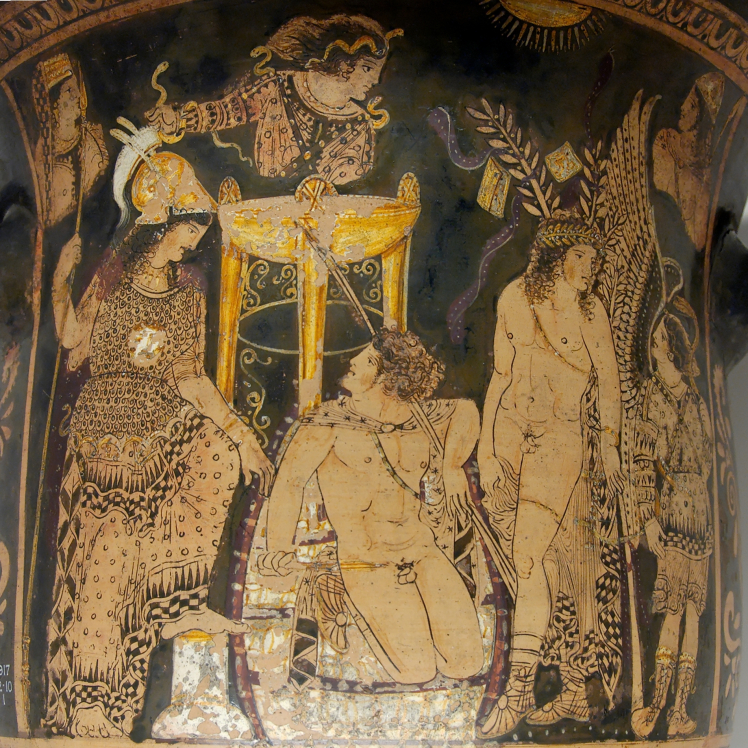
Figure 3. Orestes consulting the Oracle. Paestan red-figured bell-krater, ca 330 BC. By Python. From the British Museum; Accession number GR 1917.12-10.1. Former Hope Collection.
Delphi was the site of the temple to Apollo, in which a female oracle sat on a tripod and gave prophecies. Both individuals and entire communities could seek Apollo’s advice at the temple. The temple only functioned nine months of the year, and prophecies were only given on the seventh day after each new moon (Connelly, 2007). Literature tells us that the oracle was also responsible for performing purification rituals as well as giving prophecies. This is portrayed in Aeschylus’ Eumenides. In this play Orestes is purified by the oracle at Delphi in a vain attempt to be forgiven for murdering his mother, Clytemnestra. Orestes, in lines 280-282 of Eumenides says “the matricidal stain washed off, expelled while still fresh, at the hearth of holy Phoebus by pigs who died in purifying rites” (Aeschylus & Ruden, 2017 p.154). It can therefore be deduced that this purification ritual involved animal sacrifice.
““the matricidal stain washed off, expelled while still fresh, at the hearth of holy Phoebus by pigs who died in purifying rites.”
Joseph Eddy Fontenrose, in his book The Delphic Oracle, its Responses and Operations, catalogued the types of questions asked of the Pythia in reality and divided them into three categories: those relating to the gods, those relating to public matters, and those relating to domestic matters. It seems as though thirty percent of questions related to “cult foundations”, while about ten percent of questions related to “colony foundations” and “war” (Fontenrose, 1978, p.48).Though this statistic is interesting, we must ask ourselves why the data has been skewed this direction. We need to consider which groups of people were most likely consulting the Delphic oracle.
In order to examine this data further, gender must be discussed in relation to the sanctuary at Delphi. It is not known whether or not women were permitted to ask questions of the Oracle. If examining Delphi through the Athenian perspective, a woman’s kyrios, or guardian, would likely be sent to Delphi carrying her questions. Euripides, in his work Ion, reinforces this belief when he tells of a chorus of Athenian maidservants seeking entry into the temple. The Chorus asks “is it lawful to walk into the sanctuary?” to which Ion answers “Strangers, it is not lawful” (Euripides & Oates & O’Neill, 1938, lines 219-221) . A mere few lines later however, Ion tells the chorus “if you offer the honey cake before temple, and you wish to ask something of Phoebus, advance to the altar” (Euripides & Oates & O’Neill, 1938, lines 226-228) This could be a representation of ideology vs actual practice. In all likelihood, these women were initially refused access to the oracle due to their sex. Euripides might be saying that theoretically women would not be allowed in the temple, yet women were granted access to the oracle if they made a rich offering. Unfortunately, as there is little evidence of women asking questions of the Pythia, this examination must be halted for now.
Examining the Evidence: The site at Delphi
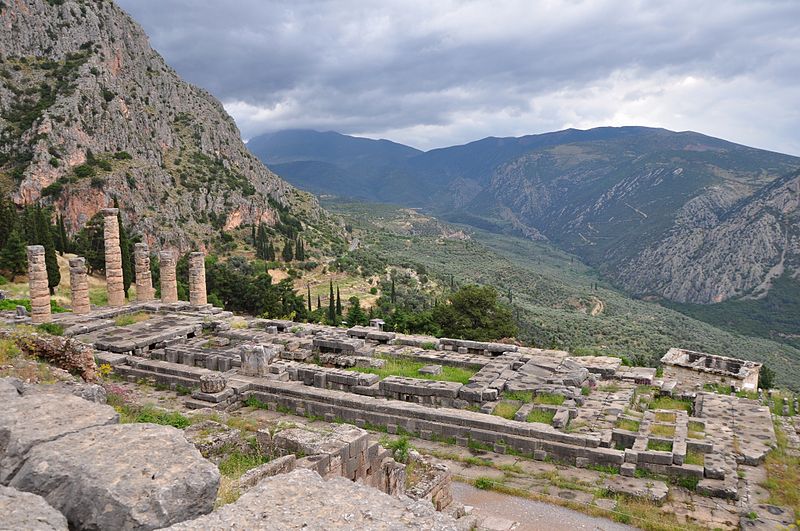
Figure 2. The Temple of Apollo. By Helen Simonsson, 2012.
The sanctuary of Apollo at Delphi was located on Mount Parnassus, in mainland Greece. Excavations of this site, headed by the French school, began in 1892(Lloyd-Jones, 1976, p.60). Pausanias tells of four temples toApollo. According to Pausanias the first temple was made of laurel branches and was constructed in the shape of a hut. The second temple was built by bees who used honey and bird feathers as construction materials. The third temple was made entirely of bronze, this temple is said to have either melted in a fire or been swallowed by the earth. Finally, Pausanias’ fourth temple was built of stone by the legendary architects Trophonios and Agamedes (Sourvinou-Inwood, 1979, 231).
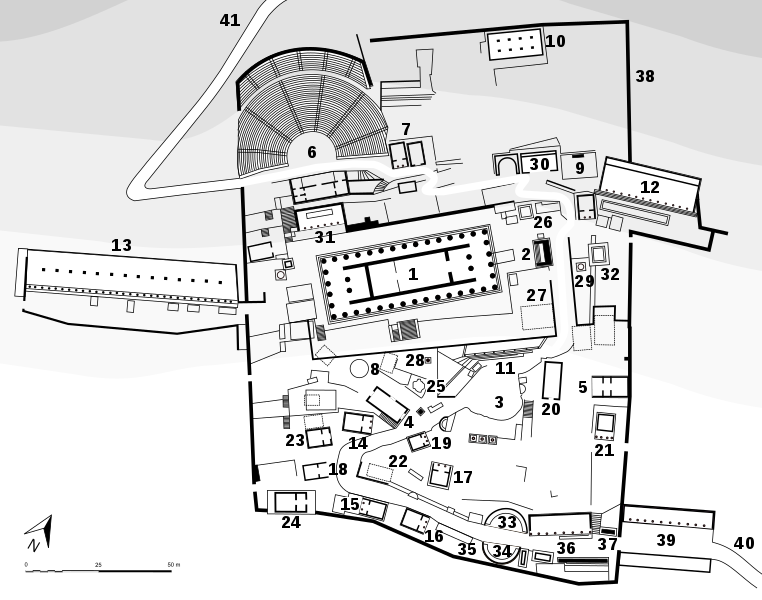
Figure 4. Site plan of the Sanctuary of Apollo in Delphi, Greece. By Tomisti, 2017.
The mentioned theatre and stoa are labelled numbers 6 and 13 respectively. The Temple of Athena Pronaia does not seem to be on this image, but it would be located around number 40.
Archaeological remains suggest that Delphi was not a grand site in the Bronze age. During this period, it seems that the temple to Apollo was located closer to the temple of Athene Pronaia than it is today. The classical temple to Apollo, that we think of today, is located instead near the theatre and the west stoa- to the west of the original site. Furthermore, the scant archaeological evidence (a few clay tablets and a Minoan drinking vessel) suggests that the site was more for a private cult than a centre of the Greek world (Lloyd-Jones, 1976, p.60). It is believed that this Bronze Age version of the sanctuary at Delphi was burned down at the beginning of the dark ages along with many other sites, however evidence supporting this belief is minimal (Lloyd-Jones, 1976, p.60). This temple is likely the third one made of bronze, mentioned by Pausanias. It is only during the subsequent Orientalizing period that Delphi began to rise as an important religious sanctuary.
The exact date that the Oracle to Apollo at Delphi rose to popularity is unknown. Hesiod mentions “Holy Pytho” in his Theogony, stating that Zeus set the stone Kronos had swallowed in his stead “up on the high-ways of the earthy in holy Pytho under the slopes of Parnassus” Hesiod & Brown, 1986, pg. 67). Hesiod’s mention of Pytho seems to indicate that an institution had been well established at Delphi during the 8th Century BC, the period in which Hesiod composed his Theogony. Homer also discusses Pytho in the eighth book of The Odyssey, in which he describes Agamemnon “in sacred Pytho, when he passed over the threshold of stone to enquire of the oracle: (Homer & Murray, 1919, Book 8, lines 80-81). This is the first piece of literature that connects the site at Delphi with oracles and prophecy. However, literature is not always the most accurate, in order to properly date the rise of the sanctuary at Delphi, archaeological evidence must be examined in combination with the already reviewed literary sources
This is the first piece of literature that connects the site at Delphi with oracles and prophecy.
During the late seventh century BC, kings began to form relationships with the Oracle at Delphi, leaving rich dedications at the site, which can be examined and dated as part of the archaeological record. Due to the bettering relationships between kings and the oracle, the Delphic oracle presided over a kingship conflict in Lydia in the mid-seventh century BC. After the Oracle determined that Gyges was the true heir, the king dedicated a great deal of gold and silver to Delphi (Scott, 2014, pg. 58). TheFirst treasury was also built on Delphi in the mid-seventh century BC and has been attributed to the Corinthian tyrant Cypselus (Lloyd-Jones, 1976, pg. 63). Through examining the literary and archaeological evidence, the rise of the site at Delphi can be dated to the 7th or 8th century BC.
Through examining the literary and archaeological evidence, the rise of the site at Delphi can be dated to the 7th or 8th century BC.
Further supporting the theory that the use of the Oracle dated to the 7th or 8th century is the construction of a stone temple during these years. According to Homer’s hymn to Apollo, the “broad and long” foundations of this early temple were laid out by Apollo, then the building was finished by Trophonios and Agamedes (Homer & Merrill, lines 295-298). Unfortunately, this temple burned down in 548 BC, this fire, though its origin is unknown, burned so intensely that “many of the sanctuary’s most extravagant metal dedications were destroyed” (Scott, 2014, p.93).Furthermore, because another, larger temple was built on the subsequent ruins, not much is known about the internal structure or organization of the earlier temple.
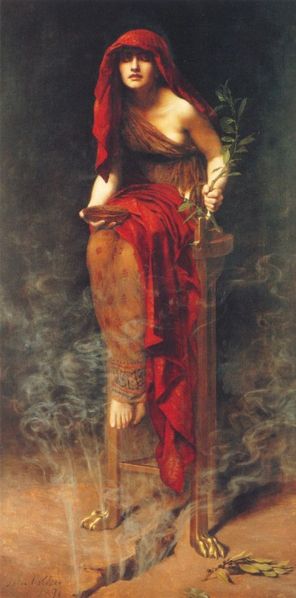
Figure 5. The Priestess at ancient Delphi, Greece. By John Collier, 1891. In the Art Gallery of South Australia. Gift of the Rt. Honourable, the Earl of Kintore 1893.
The Oracle
Priestesses would be chosen from the local community. It is well asserted that “the Pythia was not selected from any special family nor was she the product of particular training,” rather it was emphasized that oracles were regular women when free of Apollo’s influence. Plutarch also writes in his Moralia V that the oracle(s) were raised in the homes of “poor peasants” (Plutarch & Babbitt, 1936, pg.321). Bowden believes that poor women were chosen as they likely did not know a great deal about Greek politics, and thus could not act to deliberately influence events (Bowden, 2005, pg. 25). In earlier tradition, according to Diodorus of Sicily, a young maiden was decided upon as oracle, however, as time progressed, older women filled the role (Connelly, 2007, pg. 73). Diodorus says that originally a young virgin filled the position, however, after a young oracle was kidnapped and raped by Echecrates of Thessaly, Delphians changed this rule (Diodorus Siculus & Welles, 1963, pg.313). In later tradition, the role of the Pythia was given to a woman over the age of fifty, as it was believed women of this age were past their childbearing years, and thus could not be seduced into bringing the sanctuary to contempt. The Pythia, however, according to Diodorus Siculus, remained dressed in the trappings of a young maiden, reflecting earlier tradition and associating the oracle with virginal purity. There is scant evidence into the particulars of an oracle’s dress, however, John Potter writes that oracles were “not allowed to clothe themselves with rich and costly apparel, to use fantastical dresses, to anoint themselves with perfumes, or to wear purple garments” (Potter, 1837, pg. 270) As priestesses were selected at such a late age they could be married and have children. Once she took office, however, the oracle had to remain separate from her family and celibate until death (Connelly, 2007, pg. 73).
Oracles were “not allowed to clothe themselves with rich and costly apparel, to use fantastical dresses, to anoint themselves with perfumes, or to wear purple garments.”
Despite the relative importance of the Delphic oracle, a dearth of evidence remains about actual Pythia. We know that they would be chosen from the local community at a late age so as to have already experienced the various life stages expected for a Greek woman.Furthermore, we have one epigraphical source that both names an oracle and attests to the fact Pythias could have children. This third century AD inscription, recovered from a block built into a Byzantine church, tells of Theoneike who defines herself as the granddaughter of another Theoneike, a Pythia of the god (Connelly, 2007, pg. 75). It is extremely important that this block exists, as it reaffirms that the Pythia was functioning during the Roman empire, while providing empirical evidence that the Oracles at Delphi could have families.
In most respects, the oracle at Delphi can be perceived as atypical from other female priestesses in the Greek world. It is strange that the Pythia was picked from “women who were neither well born nor rich” whereas other high priestesses, such as the priestess of Athena Polias in Athens, were picked from well-born and wealthy families. It is also interesting that the duties of Oracle were not kept within a family line as seen in places such as Athens. Instead, a new oracle was selected at random when the need arose. Finally, it must be noted that the priestess of Apollo was not required to interpret signs sent to her by the god, rather, Phoebus spoke to her directly through the aromatic gases she was inhaling.
Furthermore, it is strange that the Pythia was a woman, as generally a Greek priest or priestess must be the same gender as the god they serve. Kurt Latte suggests that the Greeks imported eastern tradition and that the Pythia might have been seen as a consort of Apollo, in a way similar to the entu in ancient Mesopotamian culture (Lloyd-Jones, 1976, pg. 65). This theory has been largely critiqued, as the Oracle is not mentioned as the wife of Apollo in any literature. Another theory is that the priestess of the earth goddess who presided over Delphi before it was captured by Apollo was female, thus to keep with tradition, the oracles of Apollo were female as well ( Lloyd-Jones, 1976, pg. 66). This view is supported by Aeschylus’ Eumenides, when at the beginning of the play, the Pythia lists the genealogy of seers, listing the primal seer as Earth, who is followed by Themis, then Phoebe (Aeschylus & Ruden, 2017, pg. 145) . The true reason why the Oracle of Apollo is female is unknown, which should provide more motivation for scholars to study the sanctuary at Delphi for years to come.
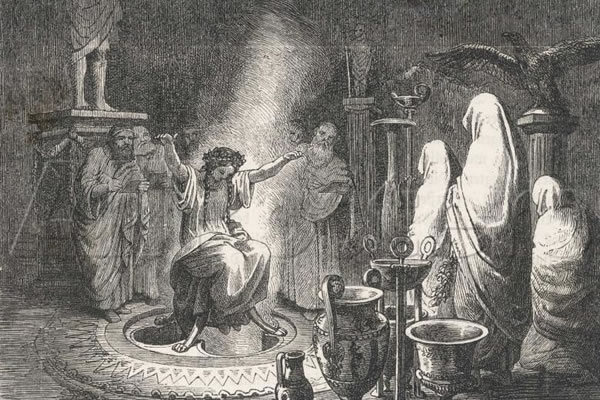
Figure 6. The Oracle of Delphi entranced. By Heinrich Leutemann, (1824-1905)
A great deal is known about the Pythia’s daily routine. The Oracle started her day at dawn by purifying herself and testing the omens. Next, the Pythia “took her seat upon the god’s sacred tripod… then the order of consultation was determined” ( Lloyd-Jones, 1976. pg. 66). The order of consultation was determined by precedence and by lot combined as those who were in favour with the Delphians were rewarded with priority. While consultation was free, sacred cakes and dedications tended to be quite expensive. In order to receive a consultation with the Oracle, the inquirer must offer sacred cake on the alter outside the temple, and sacrifice a sheep or goat in the hearth of the temple’s cella. The Pythia sat on her tripod in trance at the back of the temple’s adyton, hidden either by a curtain or a lower level. Questions were given to the Pythia by the chief priest, either in written or oral form, then a hexameter verse was given to the inquirer in response ( Lloyd-Jones, 1976. pg. 67).
While Consultation was free, sacred cakes and dedications tended to be quite expensive.
It is also interesting to note that, in Plutarch’s time, during the first century AD, three Oracles of Apollo were at Delphi. This is because the Oracles only offered consultations on the seventh day after each new moon, making consultation days extremely busy. Two oracles worked in shifts and one was prepared to take over should anything happen to one of the Oracles. This is important as it attests to just how busy the sanctuary at Delphi was, accentuating the fact that people lined up to listen to a woman.
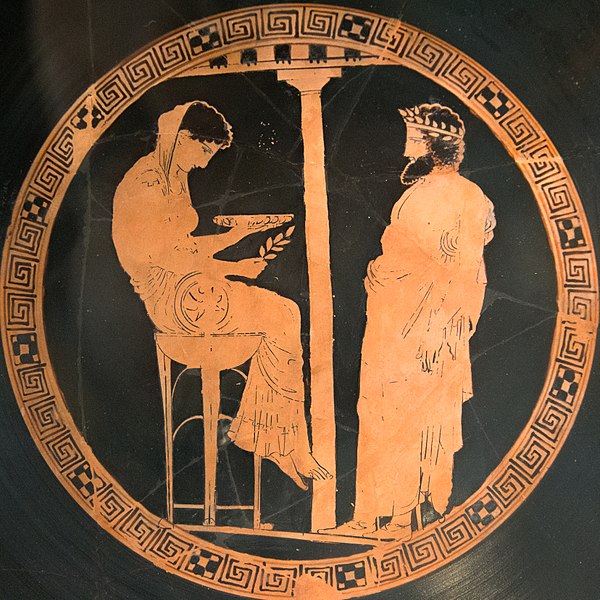
Figure 7. King Aigeus in front of the Pythia. Attic red-figure Kylie from Vulci Italy. By the Kodros painter, ca 440-430 BC. Antikensammlung Berlin, Altes Museum, F 2538.
The sanctuary at Delphi was exceedingly popular, however only one surviving depiction of a Delphic priestess exists. This piece of pottery is an Attic red figure cup attributed to the Codrus painter c. 440-430 BC. Painted inscriptions tell us that the cup portrays a mythological scene of Themis as the oracle and king Aigeus as the inquirer. The cup portrays the oracle sitting in a low ceilinged chamber on the sacred stool, with a libation bowl in one hand and a laurel branch in the other. This cup is also important as it demonstrates the Pythia wearing young maiden’s clothes, the outfit Oracles are believed to have worn.
The cohesiveness with which the Pythia spoke her prophecies is unknown. Some scholars believe that since a “chief priest” was present in the adyton to translate the oracle’s prophecies, the oracle’s words must not have been coherent at all. Modern geologists recently proved that the Pythia was perched over fault lines emanating ethylene gas. These scientists, through a series of experiments, found that a low mixture of ethyline produced a trance like state in which patients were able to “sit up and respond to questions.” Thus Simon Price, is correct when he points out that in instances of corruption, the priestess herself was bribed rather than the male priests and translators around her, and as thus, the oracle must have spoken fairly coherently. In order to further understand Price’s argument, Herodotus’ Histories must be examined.
These scientists, through a series of experiments, found that a low mixture of ethylene produced a trance like state in which patients were able to “sit up and respond to questions.”
Herodotus, in his Histories, names Perialla as a corrupt priestess of Apollo. Herodotus relays that Kobon paid the priestess Perialla to state that Demaratos was not the true son of King Ariston, and thus not fit to be king. As punishment, Kobos was banished from Delphi and Perialla was dismissed from her role as Oracle (Herodotus & Godley, 1920, 6.66.2). If Herodotus tells the truth, then oracles possessed a greater deal of agency than originally thought. This would be a crucial breakthrough for the study of women in antiquity.
Oracles in Literature
Oracles figure prominently in literature as people who shape law, shape military strategy and people’s lives.
The Oracle is portrayed in literature as a woman who can influence whether or not a law should be made. Herodotus, in his Histories, writes about the mythical Spartan lawmaker Lycurgus. According to Herodotus, “Some say that the Pythia also declared to him the constitution that now exists in Sparta…”(Herodotus & Godley, 1920, 1.65.4). Plutarch in his Life of Solon says that when Solon considered becoming tyrant of Athens he received a prophesy from Delphi stating: “Take thy seat amidships, the pilot’s task is thine; perform it; many in Athens are thine allies. “Plutarch &Perrin, 1911, pg. 439). According to Plutarch, Solon then wrote his famous constitution and became averse to tyranny. The Pythia’s word was deemed extremely important in the ancient world, and thus it influenced a great number of people.
The Pythia’s word also shaped military strategy, particularly during the Persian wars. Herodotus records, in his Histories, the ambiguity of a treaty given to Athens, in which the Pythia instructs Athenians to trust in a wooden wall. The Pythia says “Zeus will grant Athens an invincible wooden wall, and Salamis will lose many children of men at sowing time or harvest” (Fontenrose, 1978, pg. 125). Themistokles, interprets this “in accordance with his policy of building a strong navy and depending on it. (Fontenrose, 1978, pg. 125). Thus, the Pythia’s words shaped a successful battle strategy that the Greeks utilized against the Persians.
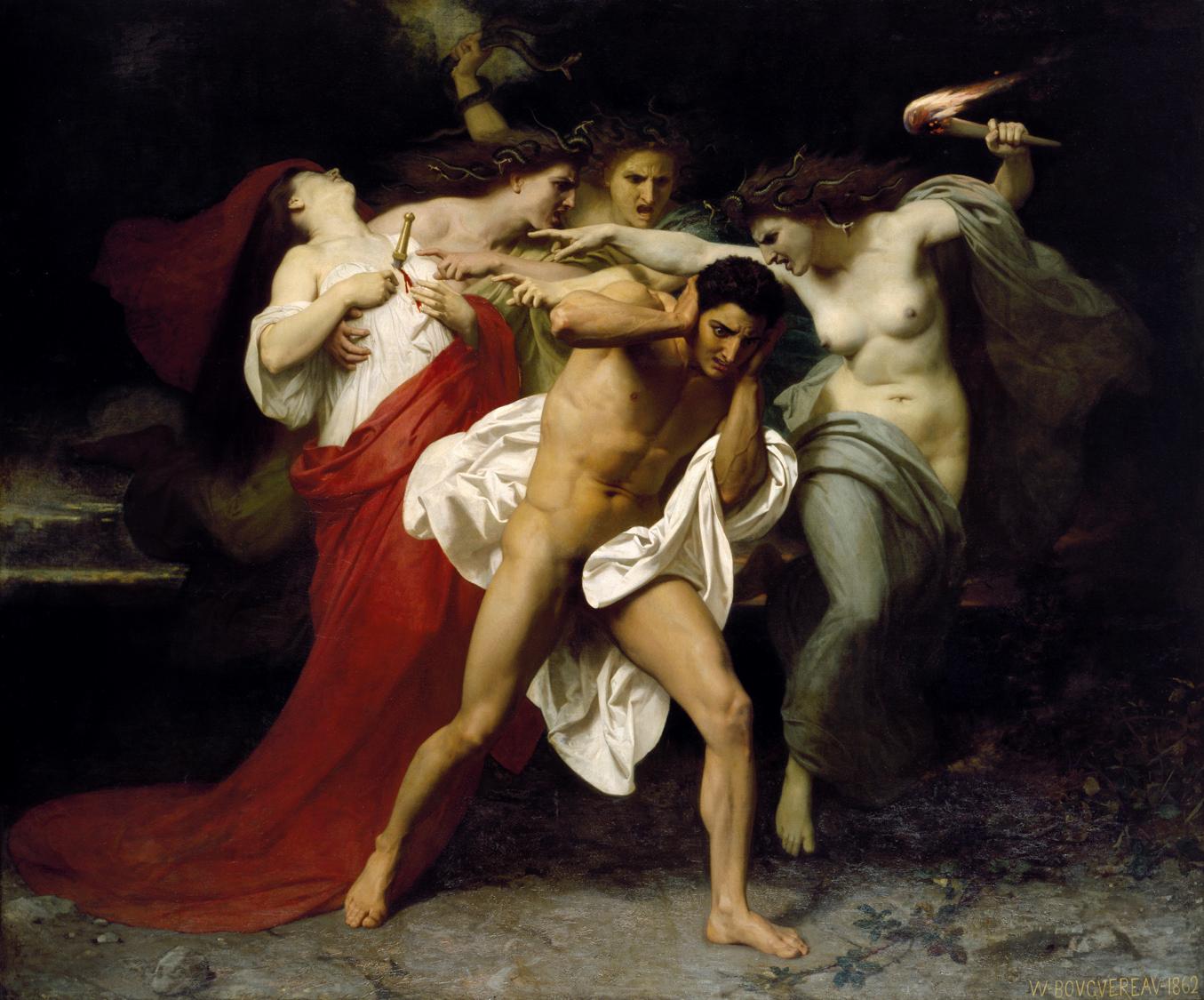
Figure 8. Orestes Pursued by the Furies. By William-Adolphe Bouguereau, 1862.
The Pythia also effectively shaped the lives of individuals. This is most commonly found in literature, however. In Sophocles’ Oedipus, Jocasta and Laios abandon their son after the Pythia tells Laios that his son will be the cause of his death. When Oedipus hears the prophecy that he will marry his mother and kill his father, he flees from the people he believes to be his parents and stays in his original home town of Thebes. A similar situation takes place in Aeschylus’ Libation Bearers, during which Orestes is told he must avenge his father’s death and kill his mother. Unfortunately, when Orestes follows Apollo’s advice he is pursued and punished by the furies. Prophesy a common theme in Greek literature, as authors explore whether or not individuals can escape fate. Due to this theme the Oracle at Delphi is viewed as an all knowing, powerful figure.
The Oracle at Delphi was an important figure, yet tales of people mistreating a Pythia exist both in myth and in historical literature. Plutarch, in his Moralia, provides a summary of his friend Nikandros’ eyewitness account. Nikandros was a priest of Apollo at Delphi and Plutarch recounts that an important embassy arrived for consultation, “but things went terribly wrong when the animal victim failed to respond to the first libations” (Connelly, 2007, pg. 77). The Pythia believed the animal’s lack of response to be an omen and refused to give a prophecy. Since the embassy was important, however, the Pythia was forced into the adyton for prophecy. Plutarch recounts that the Pythia “became hysterical and with a terrifying scream ran toward the exit and threw herself down. A few days later she died” (Connelly, 2007, pg. 77). Plutarch’s account of a forced prophecy is not the only one in existence. Lucan, in The Civil War, recounts the story of Appius Claudius forcing a prophesy from Phemonoe. Lucan says that Appius Claudius forced Phermonoe into a closed temple and asked about the outcome of the civil war. Soon, the priestess was overtaken “First the wild frenzy overflowed through her foaming lips; she groaned and uttered lout inarticulate cries with panting breath…” (Connelly, 2007, pg. 78). Phermonoe, just as the Pythia in Plutarch’s story, did not recover from her encounter. The myth of Hercules also portrays the mistreatment of a Pythia. Pausanias details that the prophetess Xenokleia refused to give a consultation to Herakles because he was guilty of murder. Herakles is said to have taken the sacred tripod out of the temple and carried it away, only returning it when Xenokleia promised to give a prophesy to Hercules (Connelly, 2007, 75). Since the mistreatment of oracles is represented in such a great number of works, there must be some truth to the literature. If this is the case, it can be observed that the Delphic oracle may have lead a life of harassment as well as comfort.
The Oracle at Delphi was an important figure, yet tales of people mistreating a Pythia exist both in myth and in historical literature.
Concluding Thoughts
“Go tell the king: Apollo’s ornate temple has fallen to the ground. Phoibos has his hut no more, nor his prophetic laurel, nor his murmuring spring. His eloquent waters now make no sound.”
The Priestess of Apollo at Delphi is a figure who played an important role in the lives of Greeks and Romans. One of the last prophecies was given in 362 AD, to Julian the Apostate. In this prophesy the Oracle said to Julian: “Go tell the king: Apollo’s ornate temple has fallen to the ground. Phoibos has his hut no more, nor his prophetic laurel, nor his murmuring spring. His eloquent waters now make no sound” (Seferis & Diskin, 2005, pg. 11). If classicists continue to examine the Delphic oracle and the site at Delphi, this last prophecy will never ring true.
References
- Bowden, Hugh. (2005). Classical Athens and the Delphic Oracle. Cambridge, United Kingdom: Cambridge University Press.
- Connelly, Joan Breton (2007). Portrait of a Priestess:Women and Ritual in Ancient Greece. Princeton, New Jersey: Princeton UniversityPress.
- Diodorus Siculus (1963). Library of History (C. BradfordWelles, Trans.) Cambridge,Massachusetts: Harvard University Press.
- Eddy Fontenrose, Joseph (1978). The Delphic Oracle, It’s Responses and Operations. California: University of CaliforniaPress.
- Euripides(2017) Eumenides (Sarah Ruden, Trans.) United States: Penguin RandomHouse LLC.
- Hale, J., DeBoer, J., Chanton, J., & Spiller, H. (2003). Questioning the DelphicOracle. ScientificAmerican, Vol. 289,No. 2, 66-73.
- Herodotus (1920). The Histories (A.D. Godley, Trans.) Cambridge, Massachusetts: Harvard University Press.
- Hesiod (1986). Theogany (Norman O. Brown, Trans.) New York, New York: Macmillan PublishingCompany.
- Homer (1919). The Odyssey (A.T. Murray, Trans.) Cambridge, Massachusetts: Harvard University Press.
- Lloyd-Jones, Hugh. (1976). The Delphic Oracle. Greece & Rome. Vol. 23, no. 1, 60-73.
- Plutarch (1911). Parallel Lives. (Bernadotte Perrin, Trans.) Cambridge, Massachusetts: Harvard University Press.
- Plutarch (1936). Moralia Volume V. (Frank Cole Babbitt, Trans.) Cambridge, Massachusetts:Harvard University Press.
- Potter, John (1837). The Antiquities of Greece. London: Blackie and Son publishing.
- Scott, Michael. (2014). Delphi: A History of the Center of the Ancient World. Princeton, New Jersey: Princeton University Press.
- Seferis, George and Diskin, Clay (2005). Delphi. A Journal of Humanities and theClassics, Vol. 12, no.3, 1-15.
- Sourvinou-Inwood, C. (1979). The Myth of the FirstTemples at Delphi. TheClassical Quarterly, Vol. 29, No. 2, 231-251.